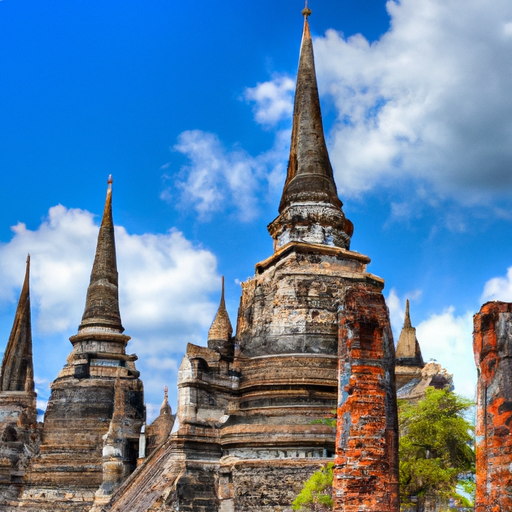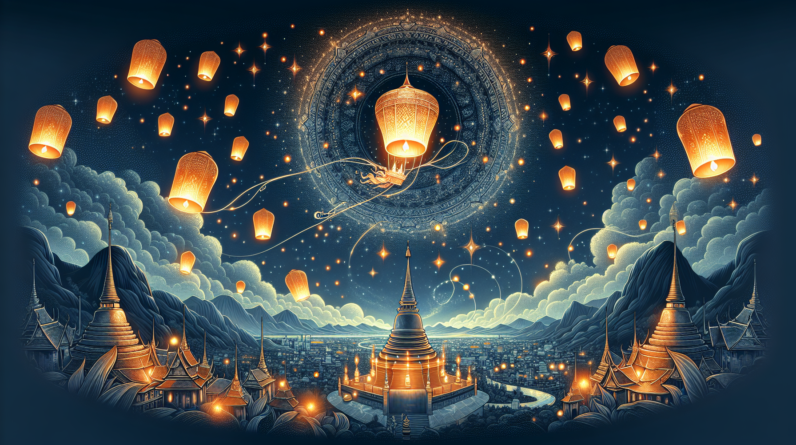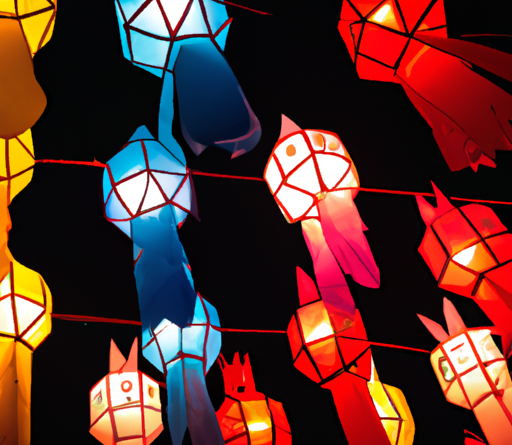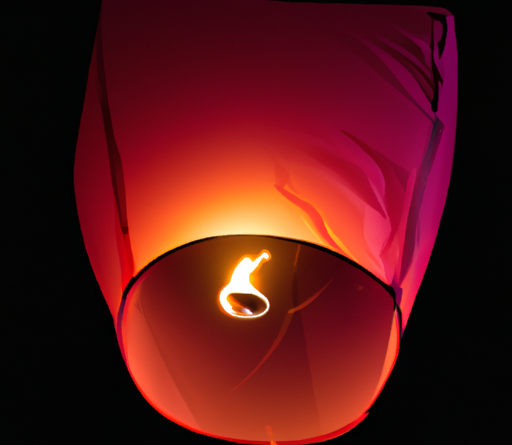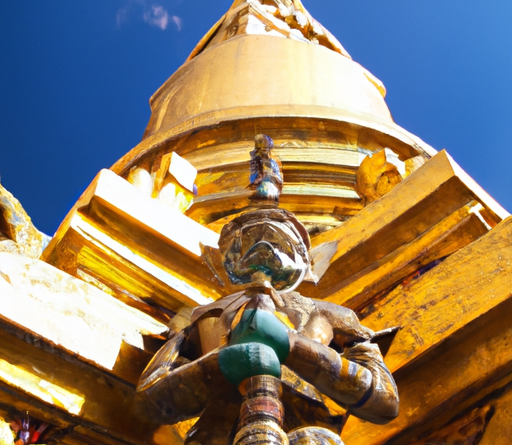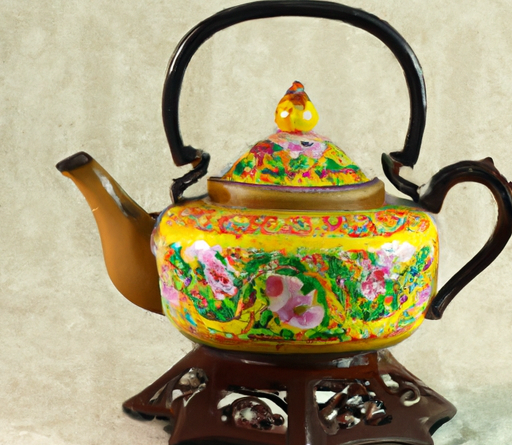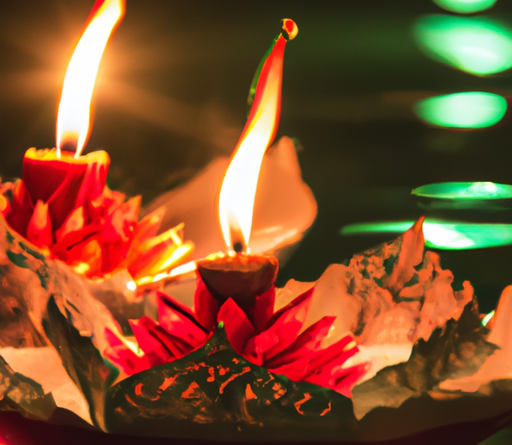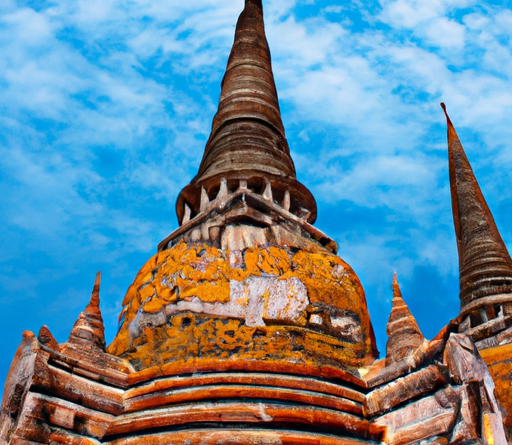
Thailand is a treasure trove of ancient temples, each with its own unique story and architectural grandeur. From the stunning Wat Phra Kaew in Bangkok, with its revered Emerald Buddha, to the iconic Wat Arun on the Chao Phraya River, adorned with intricate porcelain decorations, these majestic structures transport you to a world of awe-inspiring beauty. Embark on a journey through time as you wander through the serene grounds of the Wat Phra That Doi Suthep in Chiang Mai, or marvel at the golden splendor of the Wat Phra Singh in the historic city of Ayutthaya. With every temple holding a hidden gem of history and culture, exploring Thailand’s ancient temples promises a truly enchanting experience.
1. Ayutthaya Historical Park
Ayutthaya, located just a short distance from Bangkok, is home to several magnificent ancient temples that are steeped in history and culture. The Ayutthaya Historical Park is a UNESCO World Heritage site and is a must-visit destination for history enthusiasts and those seeking a glimpse into the glorious past of Thailand.
1.1 Wat Mahathat
One of the most iconic temples in Ayutthaya Historical Park is Wat Mahathat. This temple holds great historical and religious significance. It is believed to have been built in the 14th century and was the center of both religious and political activities during the Ayutthaya Kingdom. Visiting Wat Mahathat will give you the opportunity to see the famous Buddha head entwined in the roots of a Bodhi tree, a sight that has become an iconic symbol of Ayutthaya.
1.2 Wat Phra Si Sanphet
Another significant temple within the Ayutthaya Historical Park is Wat Phra Si Sanphet. It was once the royal temple of the Ayutthaya Kingdom and served as a model for the famous Emerald Buddha Temple in Bangkok. The temple features three impressive chedis (stupas) that soar into the sky, showcasing the grandeur of the Ayutthaya era. The intricate architectural details and ornate decorations make Wat Phra Si Sanphet a captivating sight to behold.
1.3 Wat Chaiwatthanaram
Located on the west bank of the Chao Phraya River, Wat Chaiwatthanaram is another gem within the Ayutthaya Historical Park. This striking temple was built by King Prasat Thong as a memorial to his late mother. The temple’s architectural style is influenced by both Khmer and Ayutthaya art, making it a unique and visually stunning attraction. The large central prang (tower) surrounded by smaller prangs and intricate statues create a mesmerizing scene that will transport you back in time.
2. Sukhothai Historical Park
Nestled in the beautiful countryside of northern Thailand, Sukhothai Historical Park is another UNESCO World Heritage site that showcases the ancient temples of the Sukhothai Kingdom. The park is divided into five zones, each with its own collection of temples and historical sites.
2.1 Wat Mahathat
Similar to Ayutthaya, Sukhothai also has a temple called Wat Mahathat, which is a prominent highlight of the historical park. This temple is renowned for its graceful statues of Buddha, sitting in various postures, and its lotus-bud-shaped stupas. The serene atmosphere and beautiful architectural designs of Wat Mahathat make it a must-visit temple within Sukhothai Historical Park.
2.2 Wat Si Chum
Wat Si Chum is another temple that captivates visitors with its unique and awe-inspiring architecture. The highlight of this temple is the grandeur of the sitting Buddha statue that is enclosed within a narrow chamber. The sheer size and peaceful expression of the Buddha make this temple a truly remarkable experience.
2.3 Wat Sra Sri
If you’re looking to immerse yourself in the natural beauty of the Sukhothai region while exploring ancient temples, Wat Sra Sri is the perfect destination. Situated on an island surrounded by a picturesque lake, this temple offers a peaceful retreat and a serene atmosphere. The impressive prang and well-preserved Buddha statues are the main attractions of this temple, making it a hidden gem within the Sukhothai Historical Park.
3. Wat Arun
Moving from the ancient cities of Ayutthaya and Sukhothai, we travel to Bangkok to explore Wat Arun, also known as the Temple of Dawn. Situated on the banks of the Chao Phraya River, Wat Arun is not only a historical and cultural landmark but also a symbol of Thailand’s rich architectural heritage.
3.1 History
Wat Arun has a fascinating history that dates back to the Ayutthaya Kingdom. The temple was originally built to house the Emerald Buddha, an important religious artifact. Over the centuries, Wat Arun has undergone several renovations and additions, ultimately culminating in its current form.
3.2 Architecture
The temple’s distinct architectural style sets it apart from other temples in Thailand. The central prang (tower) stands at an impressive height and is adorned with intricate porcelain and seashell designs, reflecting sunlight and creating a sparkling effect. As you ascend the steep steps leading to the central prang, you’ll be rewarded with breathtaking panoramic views of the Chao Phraya River and the surrounding skyline.
3.3 Wat Arun Ratchawararam Ratchawaramahawihan
The full name of Wat Arun is Wat Arun Ratchawararam Ratchawaramahawihan, which is quite a mouthful! Locals commonly refer to it as Wat Arun for simplicity. The temple complex not only includes the iconic central prang but also other buildings and structures that contribute to the overall beauty and significance of Wat Arun.
4. Wat Phra That Doi Suthep
The city of Chiang Mai in northern Thailand is home to one of the most visually striking and spiritually significant temples in the country – Wat Phra That Doi Suthep. Perched on top of Doi Suthep mountain, this temple offers not only a cultural experience but also stunning panoramic views of Chiang Mai city.
4.1 Legend of Doi Suthep
According to legend, a monk named Sumanathera discovered a relic believed to be a shoulder bone of the Buddha. The relic was said to have magical powers, and to honor it, a temple was built on Doi Suthep mountain. The story behind Wat Phra That Doi Suthep adds to the temple’s allure and significance.
4.2 Wat Phra That Doi Suthep Temple Complex
The temple complex of Wat Phra That Doi Suthep is a sight to behold. From the ornate Naga staircase leading up to the temple grounds to the golden chedi that houses the sacred relic, every aspect of the complex reflects the rich cultural heritage of Thailand. The statues, murals, and other decorative elements make Wat Phra That Doi Suthep an architectural masterpiece.
4.3 Panorama Views
One of the highlights of visiting Wat Phra That Doi Suthep is the panoramic view it offers. From the temple’s terrace, you can marvel at the beauty of Chiang Mai city and the surrounding mountains. Whether you visit during the day or at sunset, the view from Doi Suthep mountain is bound to leave you in awe.
5. Wat Phra Kaew
In the heart of Bangkok lies the magnificent Wat Phra Kaew, also known as the Temple of the Emerald Buddha. As one of the most sacred temples in Thailand, it holds great religious and cultural significance for the Thai people.
5.1 The Emerald Buddha Statue
The main attraction of Wat Phra Kaew is the renowned Emerald Buddha statue. Carved from a single piece of jade, this small but exquisite statue is the most revered Buddha image in Thailand. The statue is dressed in different garments according to the seasons, showcasing the close connection between Thai culture and Buddhism.
5.2 History and Significance
Wat Phra Kaew has a rich history that dates back to the 18th century. The temple has witnessed the rise and fall of different dynasties and has been a focal point for religious ceremonies and royal rituals. The cultural and historical significance of Wat Phra Kaew makes it a must-visit destination for those interested in Thai history and tradition.
5.3 Grand Palace
Located within the same complex as Wat Phra Kaew is the Grand Palace, which served as the official residence of the Thai kings for over 150 years. The Grand Palace’s stunning architecture, with its intricate details and glistening spires, provides a glimpse into the opulence and grandeur of the Thai royal court. Exploring the Grand Palace grounds is an experience that will transport you to a bygone era.
6. Wat Chedi Luang
In the city of Chiang Mai, Wat Chedi Luang stands as a magnificent testament to the architectural prowess of the Lanna Kingdom. This temple has undergone several transformations throughout its history, making it a unique blend of ancient and modern elements.
6.1 Construction and Architecture
Wat Chedi Luang was built in the 14th century and originally stood at a height of over 80 meters. However, due to earthquakes and natural deterioration, only a portion of the chedi remains today. Nevertheless, the remaining structure is still awe-inspiring and offers a glimpse into its former glory. The architectural style of Wat Chedi Luang showcases the distinctive characteristics of the Lanna Kingdom.
6.2 Major Renovations
Over the years, Wat Chedi Luang has undergone various renovations to preserve its historical and cultural significance. In recent decades, significant efforts have been made to restore and reconstruct parts of the temple, ensuring that it remains a vital landmark in Chiang Mai.
6.3 Monk Chat Program
One unique aspect of Wat Chedi Luang is its Monk Chat Program. Visitors have the opportunity to have informal conversations with Buddhist monks, allowing for a cultural exchange and the chance to learn more about Buddhism and the lives of monks in Thailand. The Monk Chat Program is a great way to gain insights into the local culture and deepen your understanding of spirituality.
7. Wat Rong Khun
Located in Chiang Rai, Wat Rong Khun, also known as the White Temple, is not your typical ancient temple. It is a contemporary masterpiece that seamlessly blends traditional Buddhist art with modern architectural techniques.
7.1 The White Temple
What sets Wat Rong Khun apart from other temples in Thailand is its dazzling white exterior. Every inch of the temple is intricately decorated with small pieces of mirrored glass, reflecting sunlight and creating an ethereal atmosphere. The white color symbolizes purity and is believed to represent the Buddha’s wisdom.
7.2 Contemporary Art Influence
Wat Rong Khun is the brainchild of renowned Thai artist Chalermchai Kositpipat. The temple showcases his unique artistic vision, with elements of surrealism, pop culture references, and intricate details that make it more than just a place of worship. The fusion of contemporary art and traditional Buddhist symbolism creates a one-of-a-kind aesthetic experience.
7.3 Unusual Symbolism
As you explore the grounds of Wat Rong Khun, you’ll notice a multitude of unusual symbols and sculptures. From fierce guardian statues at the entrance to the bridge adorned with outreaching hands representing desire and temptation, every element has deep symbolic meaning. Wat Rong Khun challenges traditional notions of temple design and invites visitors to question and contemplate their own existence.
8. Wat Phra Singh
Situated in the heart of Chiang Mai’s old city, Wat Phra Singh is one of the most revered temples in northern Thailand. This temple is not only a religious site but also an architectural marvel that showcases the exquisite craftsmanship of the Lanna Kingdom.
8.1 Lai Kam Chapel
One of the standout features of Wat Phra Singh is the Lai Kam Chapel. This beautifully decorated building features intricate woodcarvings, gilded accents, and elaborate murals depicting scenes from Buddhist mythology. The craftsmanship and attention to detail make the Lai Kam Chapel a visual delight.
8.2 Gardens and Scripture Repository
Wat Phra Singh also boasts picturesque gardens that offer a serene and peaceful atmosphere for visitors to relax and soak in the beauty of the surroundings. The temple is also home to a well-preserved scripture repository, which houses important Buddhist texts and artifacts.
8.3 Songkran Festival
In April, Wat Phra Singh becomes the epicenter of the Songkran Festival, Thailand’s most famous water festival. During this vibrant celebration, locals and tourists come together to celebrate the Thai New Year by engaging in water fights and other festive activities. The temple becomes a hub of excitement and joy during this time, providing a unique opportunity to experience the lively spirit of Thai culture.
9. Wat Tham Pha Plong
Nestled in the mountains of Mae Rim, near Chiang Mai, Wat Tham Pha Plong offers a tranquil escape from the bustling city. This temple is known for its picturesque setting, unique architecture, and serene environment.
9.1 Lanna Architecture
Wat Tham Pha Plong showcases traditional Lanna-style architecture, which is characterized by its ornate roofs, intricately carved wooden elements, and colorful decorations. The temple seamlessly blends in with the surrounding natural beauty, creating a harmonious and peaceful atmosphere.
9.2 Cave and Meditation
One of the main attractions of Wat Tham Pha Plong is the cave situated behind the temple. Visitors can climb a steep staircase to reach the cave, where meditation sessions are often held. The cave’s interior is adorned with Buddha statues and religious symbols, providing a serene space for contemplation and inner reflection.
9.3 Wildlife and Nature
The temple is located in the midst of lush greenery and offers stunning views of the surrounding mountains and valleys. The tranquil environment attracts a variety of bird species, making it a paradise for birdwatchers. Exploring the temple grounds and immersing yourself in nature is a serene and rejuvenating experience.
10. Wat Yai Chai Mongkol
Last but not least, we come to Wat Yai Chai Mongkol in Ayutthaya. This temple is known for its impressive reclining Buddha image, grand prayer hall, and annual festival that draws crowds from near and far.
10.1 Reclining Buddha Image
The highlight of Wat Yai Chai Mongkol is the massive reclining Buddha image, which stretches over 40 meters in length. This image, covered in gold leaf, exudes a sense of tranquility and serenity. It is one of the largest reclining Buddha statues in Thailand and a sight to behold.
10.2 Prayer Hall
The main prayer hall of Wat Yai Chai Mongkol is an architectural masterpiece. The ornate gilded columns, intricate woodcarvings, and vibrant murals create a visually stunning environment for worship and reflection. Inside the hall, you’ll find numerous Buddha images and religious artifacts that add to the cultural and spiritual significance of the temple.
10.3 Annual Festival
Every year, Wat Yai Chai Mongkol hosts a grand festival to celebrate the temple’s founding and pay homage to its historical significance. During this festival, locals gather to participate in traditional ceremonies, Buddhist rituals, and cultural performances. From vibrant processions to colorful market stalls, the annual festival at Wat Yai Chai Mongkol is a joyful celebration of Thai culture and tradition.
In conclusion, Thailand’s ancient temples offer a glimpse into the country’s rich history, culture, and architectural prowess. From the magnificent ruins of Ayutthaya and Sukhothai to the modern marvels of Wat Rong Khun and Wat Phra Kaew, each temple has a story to tell and a unique beauty to discover. Exploring these majestic ancient temples is an experience that will leave you in awe of Thailand’s glorious past and vibrant present.
